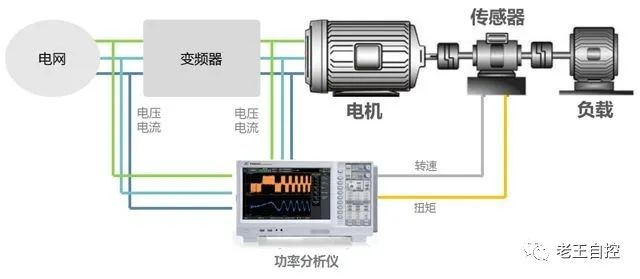![]()

1. U/f constant control
U/f control is to change the voltage of the motor power supply while changing the frequency of the motor power supply, so that the magnetic flux of the motor remains constant. In a wide range of speed regulation, the efficiency and power factor of the motor do not decrease. Because it is the ratio of the control voltage (Voltage) to the frequency (Frequency), it is called U/f control. The main problem of constant U/f control is that the low-speed performance is poor. When the speed is extremely low, the electromagnetic torque cannot overcome the large static friction force, and the torque compensation of the motor cannot be properly adjusted to adapt to the change of the load torque; the second is The actual speed of the motor cannot be accurately controlled. Since the constant U/f frequency converter is an open-loop speed control, it can be seen from the mechanical characteristic diagram of the asynchronous motor that the set value is the stator frequency, which is the ideal no-load speed, and the actual speed of the motor is determined by the slip, so U/f The stability error existing in the f constant control mode cannot be controlled, so the actual speed of the motor cannot be accurately controlled.
2. Slip frequency control
Slip frequency is the difference between the frequency of the AC power applied to the motor and the speed of the motor. According to the stable mathematical model of the asynchronous motor, when the frequency is constant, the electromagnetic torque of the asynchronous motor is proportional to the slip, and the mechanical characteristics are straight lines.
Slip frequency control is to control the torque and current by controlling the slip frequency. Slip frequency control needs to detect the speed of the motor to form a speed closed loop. The output of the speed regulator is the slip frequency, and then the sum of the motor speed and the slip frequency is used as the given frequency of the inverter. Compared with U/f control, its acceleration and deceleration characteristics and the ability to limit overcurrent are improved. In addition, it has a speed regulator, which uses speed feedback to form a closed-loop control, and the static error of the speed is small. However, in order to achieve the steady state control of the automatic control system, good dynamic performance cannot be achieved.
3. Vector control
Vector control, also known as field oriented control. It was first proposed by F. Blasschke et al. in West Germany in the early 1970s, and described this principle by comparing DC motors and AC motors. This created a precedent for AC motors and equivalent DC motors. The practice of vector control frequency conversion speed regulation is to use the stator AC current Ia, Ib, Ic of the asynchronous motor in the three-phase coordinate system. Through the three-phase-two-phase transformation, it is equivalent to the AC current Ia1 and Ib1 in the two-phase stationary coordinate system, and then through the rotation transformation according to the orientation of the rotor magnetic field, it is equivalent to the DC current Im1 and It1 in the synchronous rotating coordinate system (Im1 is equivalent to It is based on the excitation current of the DC motor; It1 is equivalent to the armature current of the DC motor), and then imitates the control method of the DC motor to obtain the control amount of the DC motor, and realizes the control of the asynchronous motor through the corresponding coordinate inverse transformation. The emergence of the vector control method makes the frequency conversion speed regulation of the asynchronous motor in an all-round dominant position in the field of motor speed regulation. However, the vector control technology needs to correctly estimate the parameters of the motor, and how to improve the accuracy of the parameters has been a research topic.
4. Direct torque control
In 1985, Professor DePenbrock of Ruhr University in Germany proposed the theory of direct torque control for the first time. This technology solved the shortage of vector control to a large extent. It does not indirectly control torque by controlling current and flux linkage, but The torque is directly controlled as the controlled quantity. The superiority of torque control lies in: torque control is to control the stator flux linkage, which does not need the speed information in essence, and the control is robust to all motor parameter changes except the stator resistance; the introduced stator flux linkage observation The controller can easily estimate the synchronous speed information, so it can conveniently realize the speed sensorless control. This kind of control is called the speed sensorless direct torque control.




























 XINDA
XINDA